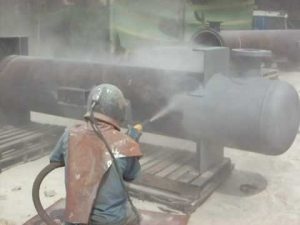Key Factors to Consider for Powder Coating Different Metal Surfaces

Powder coating is a widely used method for both protecting and enhancing the appearance of metal surfaces. While this technique can be applied to a variety of metals, such as aluminum, stainless steel, and steel, it is important to take into account specific considerations during the coating process. This article aims to delve into the nuances of powder coating different metal surfaces, emphasizing significant factors that contribute to strong adhesion and long-lasting finishes.
Aluminum:
Aluminum is a commonly used metal, but its smooth surface and susceptibility to corrosion can affect the adhesion of powder coatings. Effective surface preparation is crucial for improving adhesion. Common practices include etching, acid cleaning, or zinc treatment prior to applying the powder coating.
Stainless Steel:
Stainless steel is renowned for its corrosion resistance, but its smooth surface and passive oxide layer can pose adhesion challenges for powder coatings. Implementing proper surface preparation is essential to ensure a durable finish. Techniques like sandblasting, chemical treatment, or the use of specialized primers can enhance adhesion on stainless steel surfaces.
Steel:
Steel is a widely used metal, but its surface may exhibit oxidation, rust, or residual oil, which can impede powder coating adhesion. Thorough surface preparation is critical to eliminate contaminants and promote strong adhesion of the coating. Typical pre-treatment methods for steel surfaces involve rust removal, thorough cleaning, and surface profiling to optimize the surface for powder coating.
Other Metals:
Certain metals, including copper, magnesium, and galvanized steel, may require specific considerations due to their unique properties. Applying a conductive primer prior to coating is advisable for copper surfaces. Magnesium surfaces often necessitate meticulous cleaning and pre-treatment due to their reactive nature. Proper cleaning and etching may also be necessary for galvanized steel surfaces to ensure optimal adhesion.
While powder coating can be successfully applied to a wide range of metal surfaces, it is crucial to account for the distinctive characteristics and properties of each metal during the coating process. By prioritizing effective surface preparation, including cleaning, pre-treatment, and the potential use of specialized primers, strong adhesion and durable finishes can be achieved. By understanding these considerations and employing appropriate techniques, one can accomplish high-quality powder coating results, enhancing the performance and aesthetics of metal surfaces.

 D5 Creation
D5 Creation